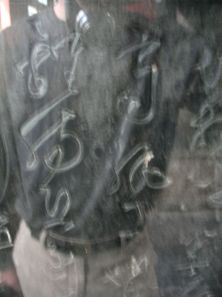The 7.9-magnitude earthquake that hit Sichuan province has killed more than 68,000 people by the current count and left millions homeless. I was fortunate enough to be well out of the country when the disaster occurred, although in any case the closest I got to the future epicenter was Xi’an, more than 400 miles distant.
But earthquakes certainly are scary things. The quality of a building’s construction is probably the biggest factor determining safety, but even if your building is earthquake-proof, that won’t matter if a mountain falls on you, and even if you don’t have that danger, things like gas leaks and soil liquefaction can still do you in.
And aside from loss of life, there’s destruction to homes, businesses, and infrastructure. The 1995 Kobe Earthquake “only” killed about 6,400 people, but it still holds the record for the costliest natural disaster to befall a single country, with $200 billion in damage. Kobe was Japan’s busiest port before the quake, but although the city has recovered, it’s now the number four port and isn’t likely to regain its former prominence.
But back to my travels.
On my second day in Xi’an, I visited the famous Terracotta Army, which lies a fair distance outside the city. Statues were discovered in 1974 by farmers digging a well and are still being slowly excavated and restored. The life-sized figures number in the thousands and the enclosures protecting the several excavation sites are as big as aircraft hangers.
The army was built to accompany the First Emperor into the afterlife. The Qin dynasty also soon followed him into death, but the emperor definitely left his mark on history. As he forged the empire, he standardized measures, currency, laws, and writing. He undertook immense canal and road building projects, and he connected several walls left over from the Warring States period into the predecessor of the Great Wall. He also ruthlessly repressed Confucianism, which stresses that rulers should be virtuous and benevolent, burning books and burying hundreds of Confucian scholars alive (Confucianism was revived in the next dynasty, though). He did everything on a grand scale and his burial arrangements were no exception.
The Terracotta Army includes not only infantry, but also archers, charioteers, horses, officers, generals, and even some jugglers. Their uniforms differ by rank, but even among soldiers of the same type, you can see variation in faces and clothing.
I think this is a so-called “heavenly horse,” a Ferghana.
The horses were imported from Bactria, and although they’re much smaller than Arabians, they’re larger and faster than the little Mongolian horses that had previously been used in China and they were highly prized.
**************************************************
After returning to the city, I spent the end of the day at the “Stele Forest.”
The Stele Forest is a collection of more than 2,000 stelae, kept within a Confucian temple. The stone blocks are inscribed with all manner of things, including books, poetry, memorials, and the occasional map or diagram.
There’s some pretty major stuff in the collection. For example, this stele is the first record of Christianity in China.
It was carved in 781 and it documents the spread of Nestorian Christianity since it entered the empire in 635. Christianity was later outlawed and the stele was buried and forgotten until being unearthed in the 17th century.
Content aside, on many stelae, the writing itself is a treasure. The work of a number of famous calligraphers is in the collection and a variety of styles are represented. Alas, due to glare, I don’t have any decent pictures of the best calligraphy, but I can at least show some different types of writing.
This is seal script, so called because today it’s mostly only used in official seals.
The newly codified characters mandated by the Qin emperor were written in seal script. Although it is thoroughly abstract and stylized, it’s closer to the writing system’s pictographic origins than later forms. I think this stele is a guide to writing seal script made after it had passed out of daily use, because it’s subtitled in the “regular script” seen here.
Regular script, which evolved out of clerical hand, is what people use today. It’s the easiest style to read and write.
And for an even bigger contrast, this is cursive, known as grass script.
I find it amazing that anyone can actually read grass script. When I see Japanese written in the style I can never make out more than a couple words.
*********************************************
Well this entry took forever. I’ll try to speed up my pace as far as time allows, because at this rate, I’ll be back in the States before I finish writing about China. Just two months to go. Yikes.
*********************************************
Addendum:
Here’s a neat chart from Wikipedia showing how the character for “tiger” evolved from a pictograph to its modern, abstract form.
As an aside, it’s worth noting that only a small fraction of Chinese characters have direct pictographic origins. Most are composed of one part indicating the general meaning and another part supplying the pronunciation (at the time the character was invented, that is). For example, “language,” 語, is made of a part indicating speech-related words, 言, plus a part giving the pronunciation, 吾, whose own meaning (“my”) is unrelated to that of final character. Alas, things are complicated by how pronunciation has changed over the centuries. Although 語 and 吾 were both pronounced something like “go” during the Han dynasty, modern Mandarin says “yǔ” and “wú” respectively. So while there is logic in how characters were made, the task of learning them today is mostly rote memorization.








